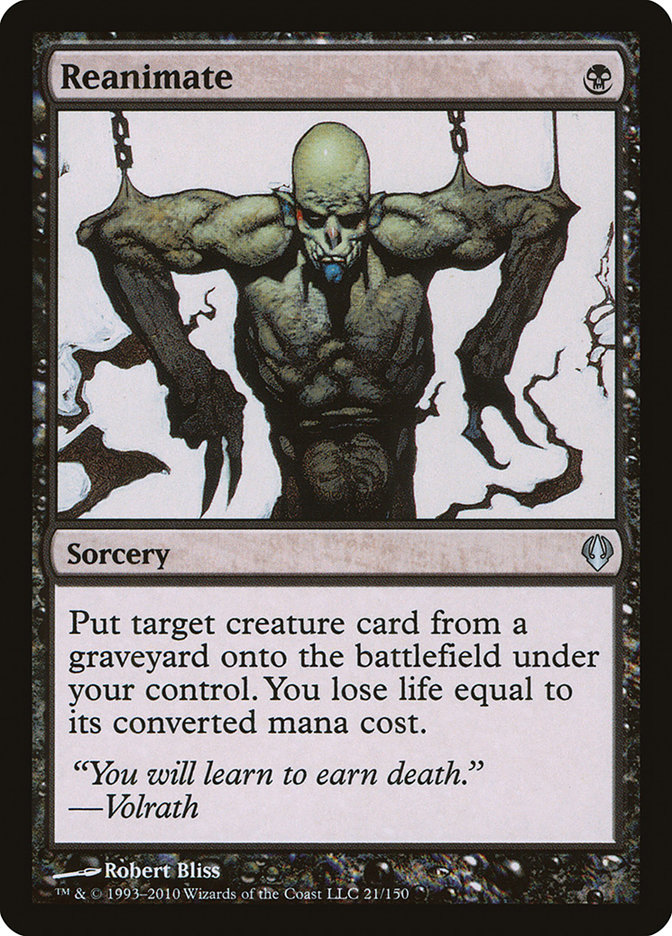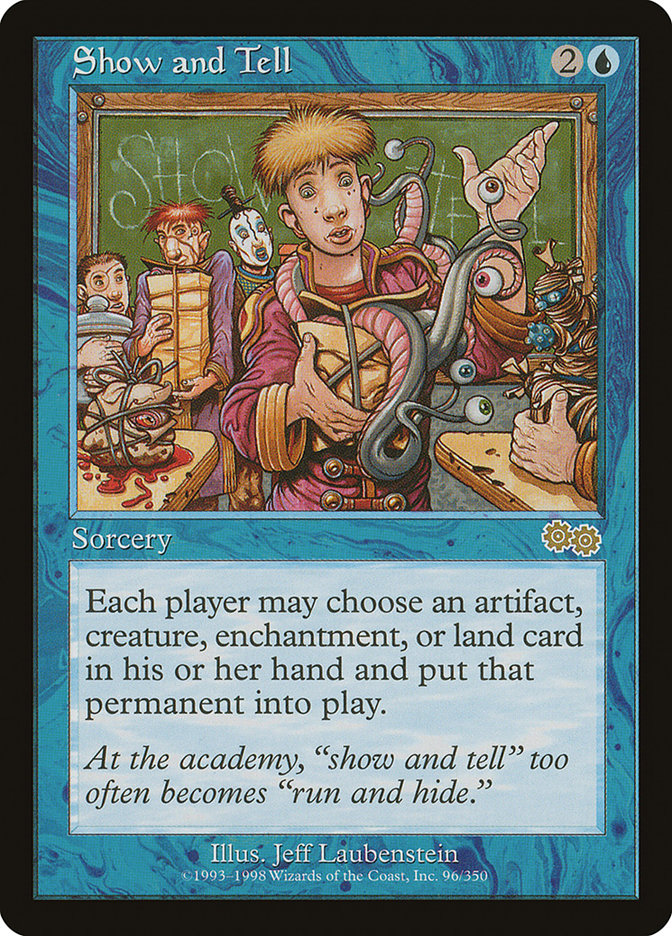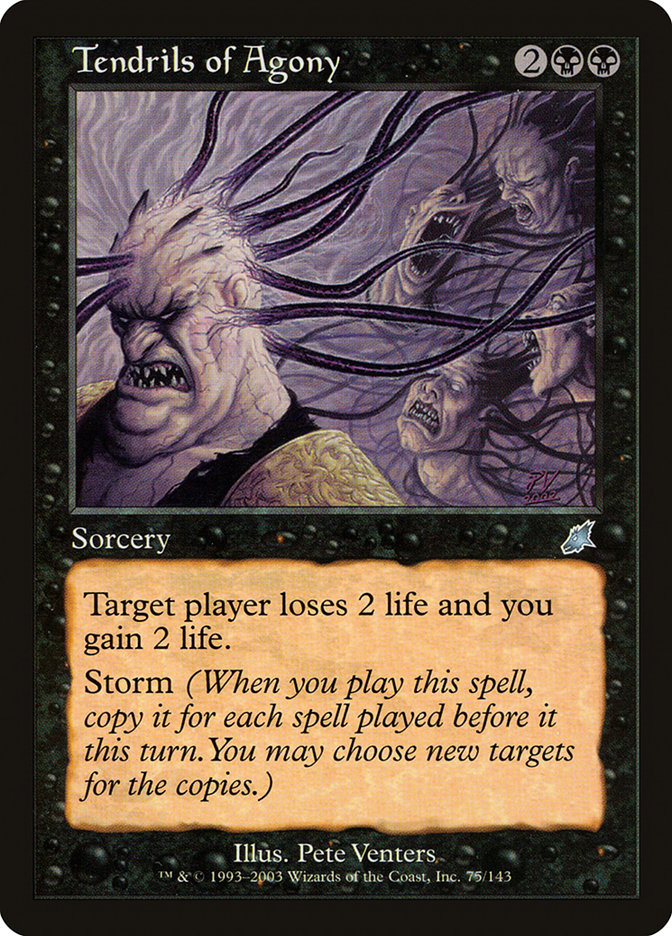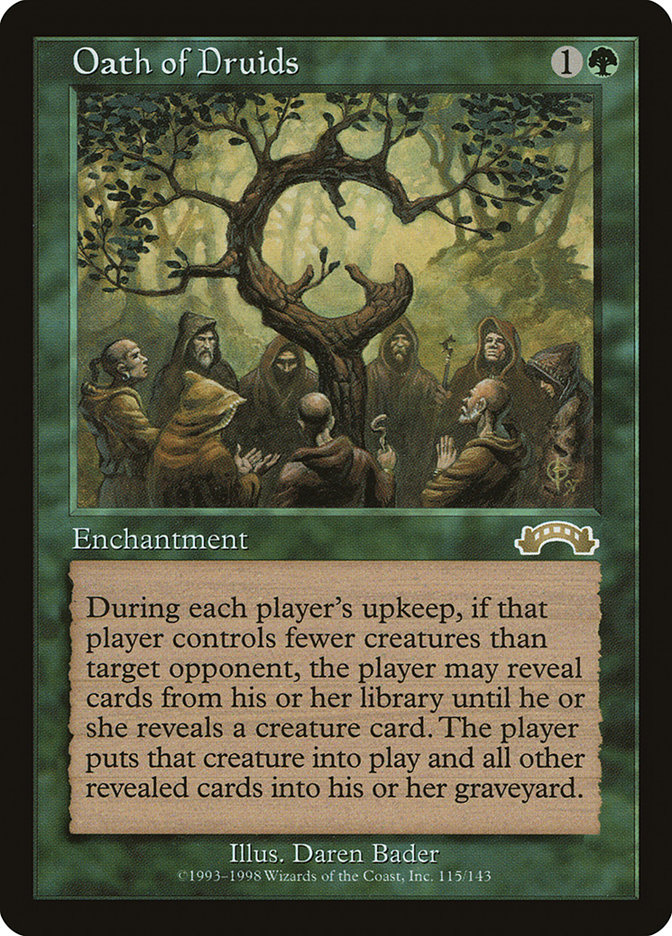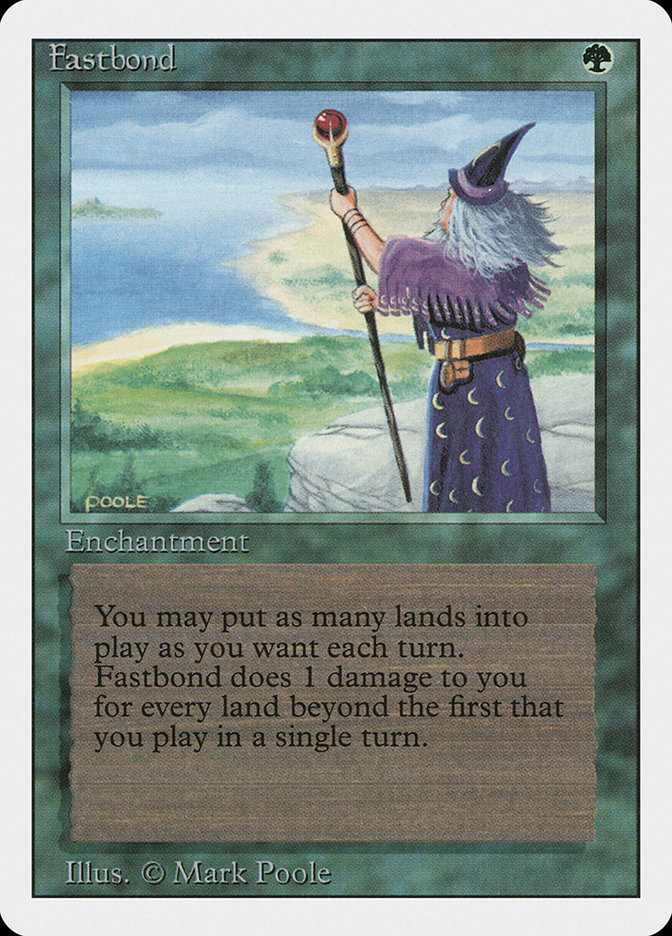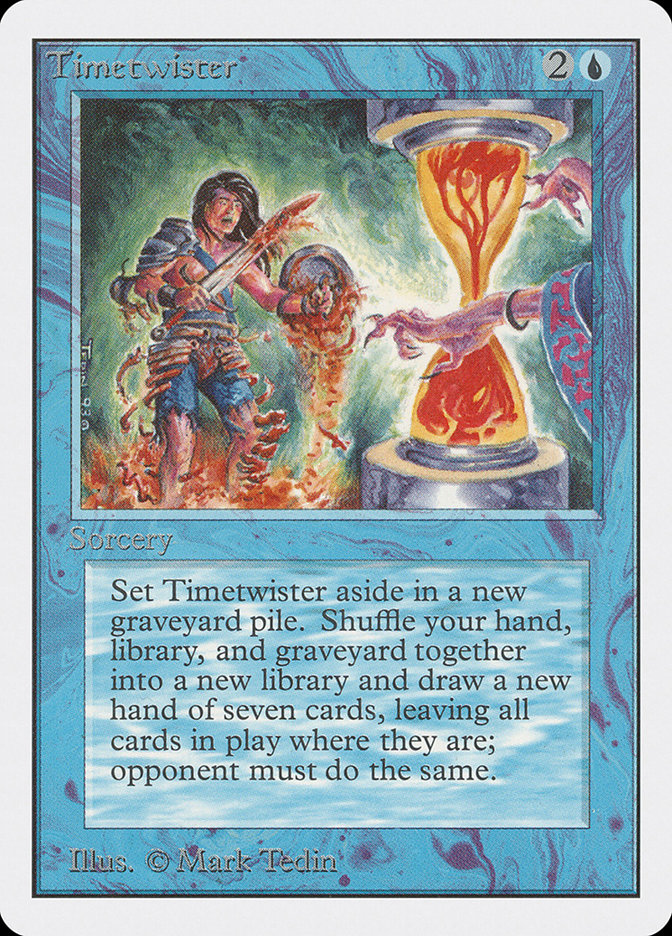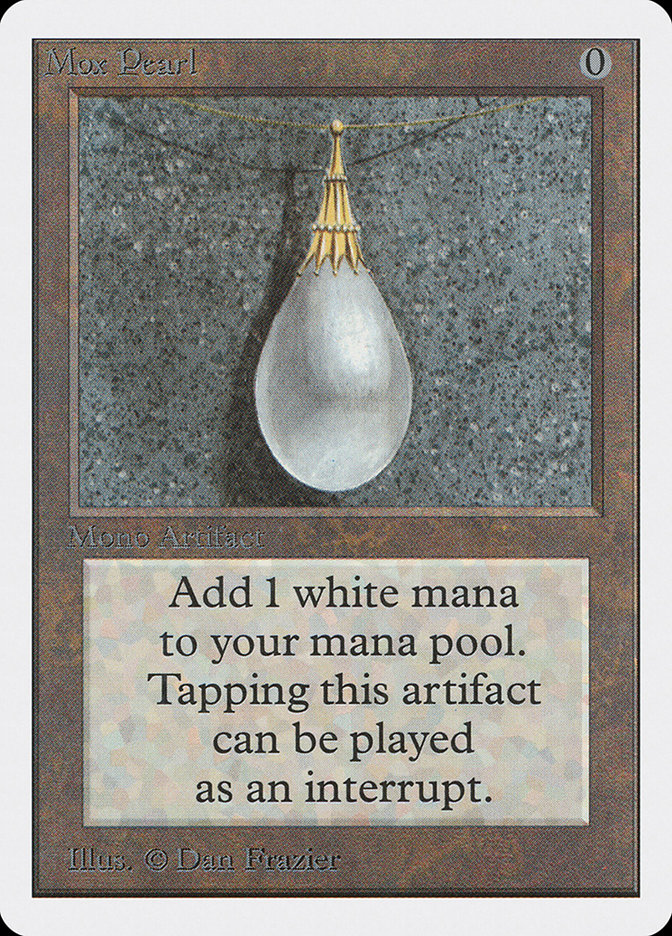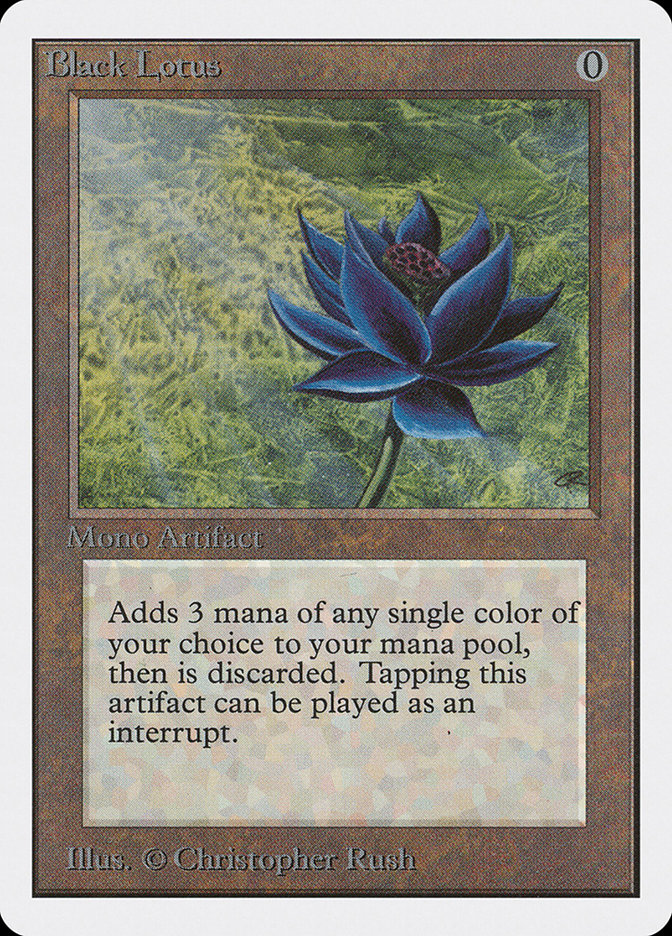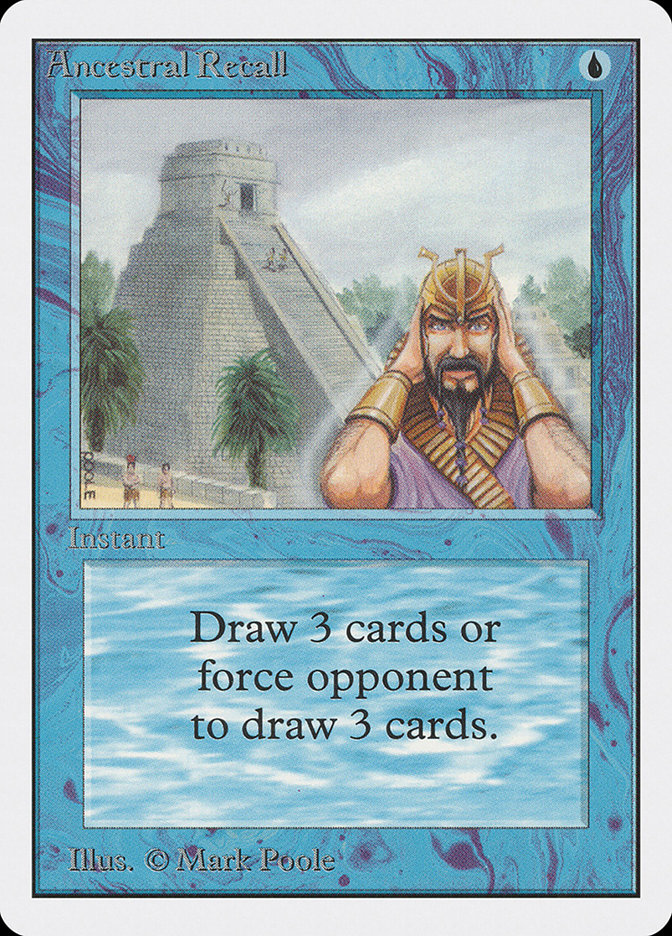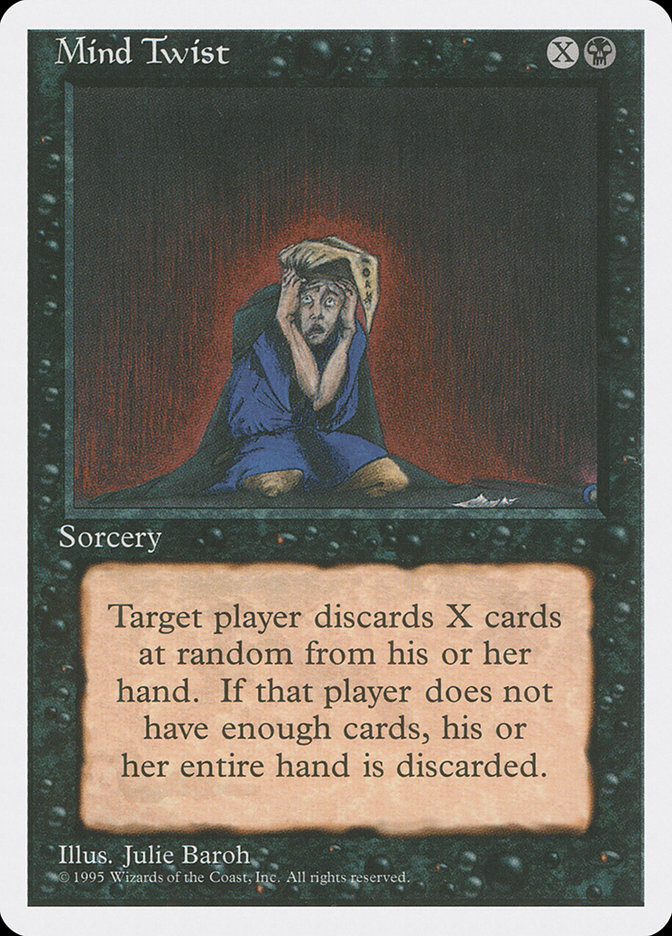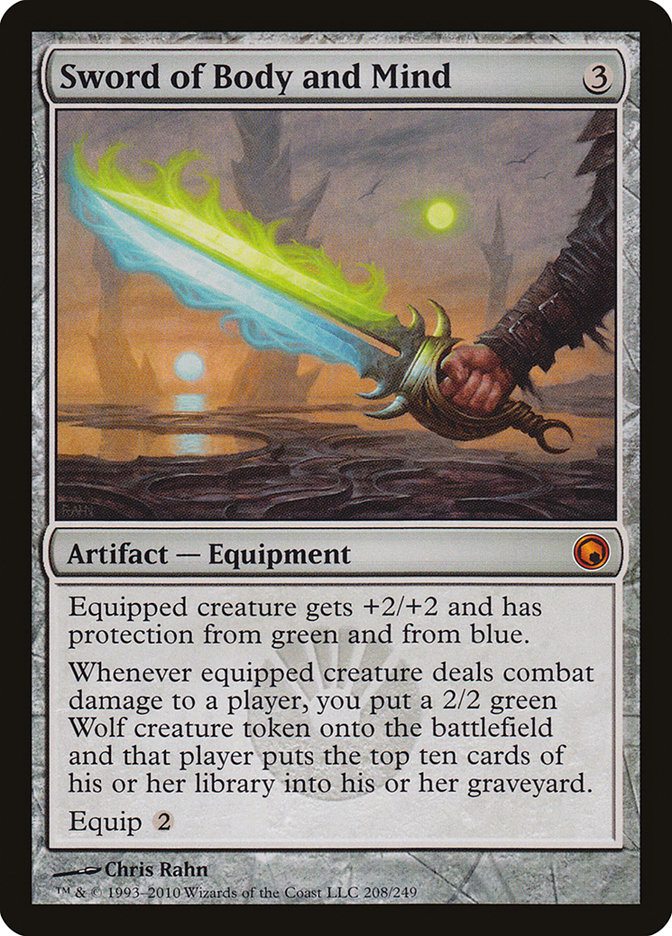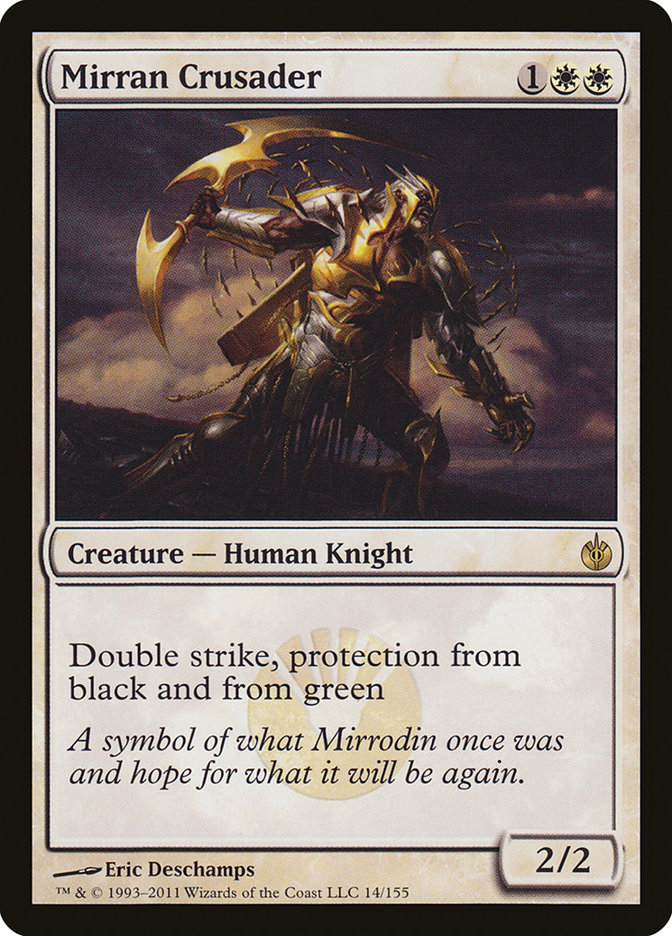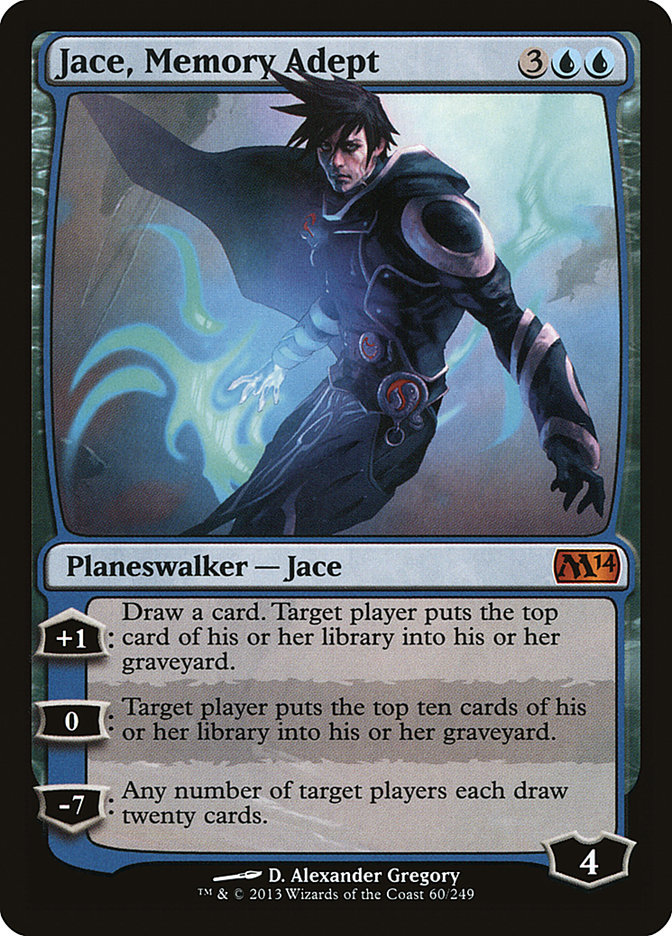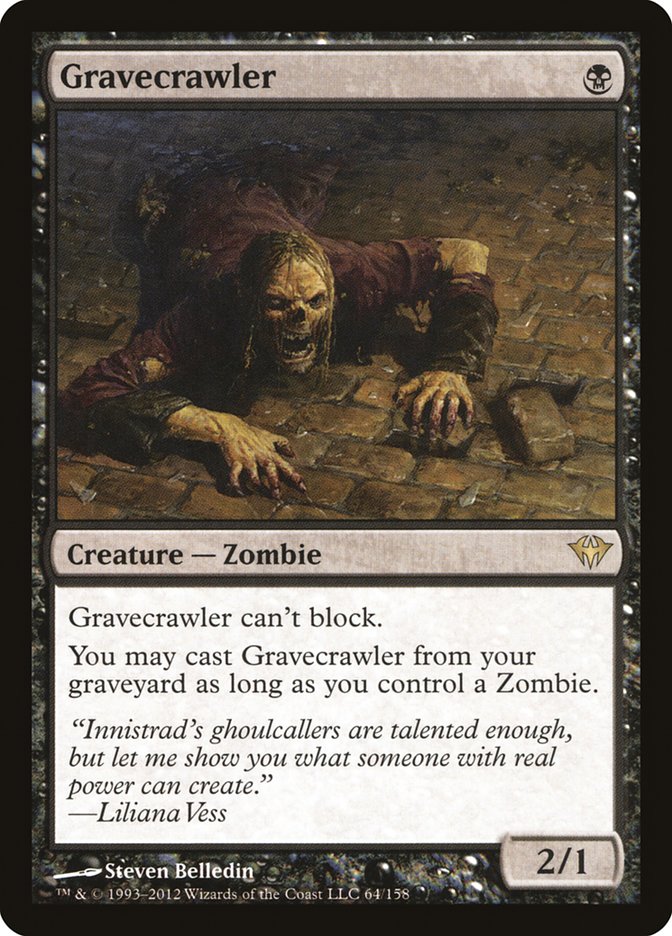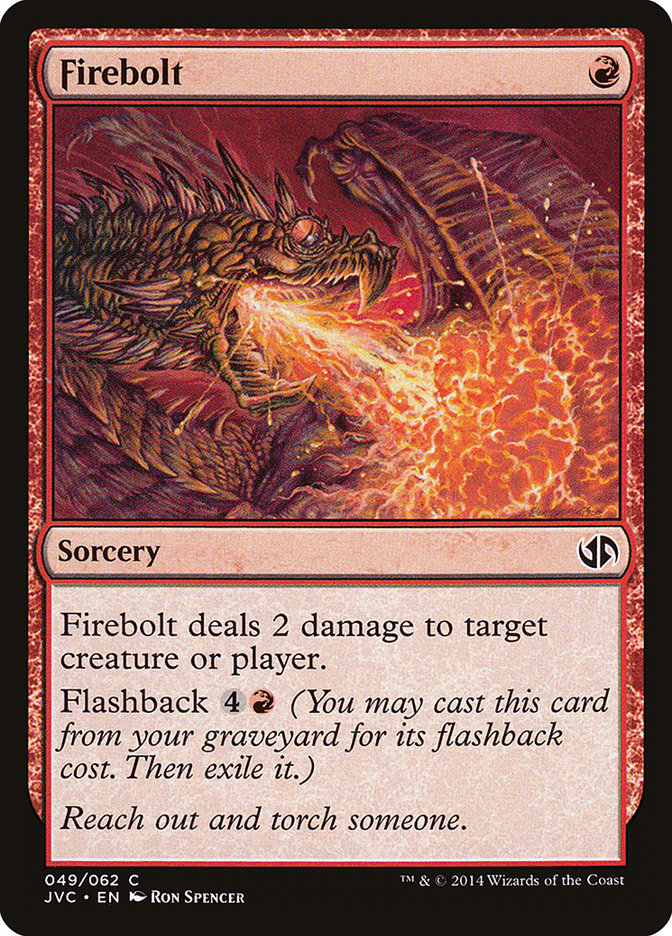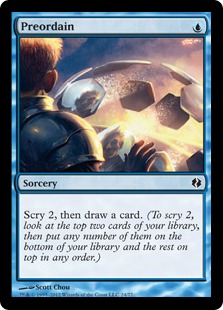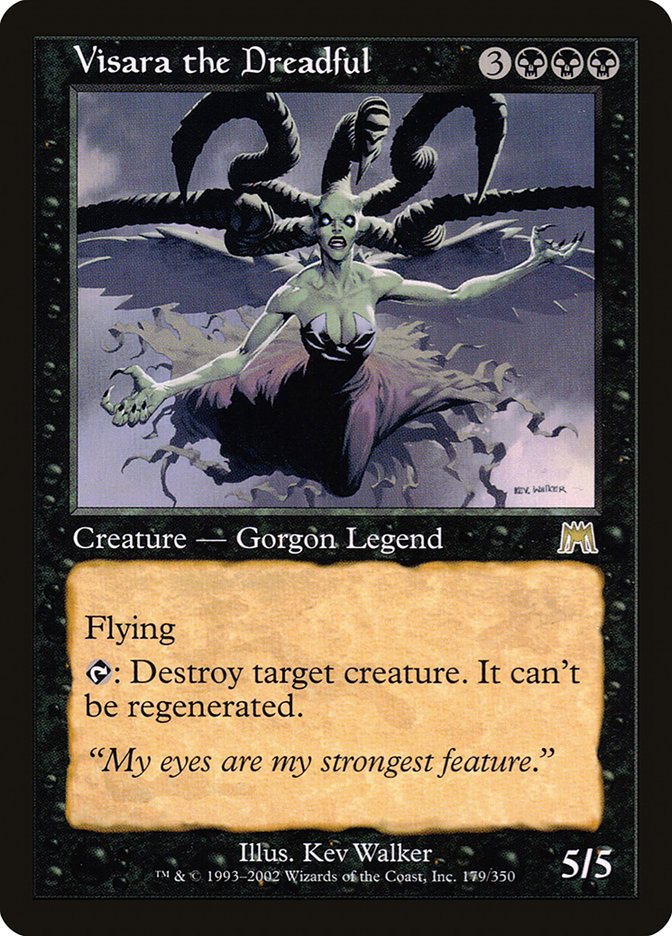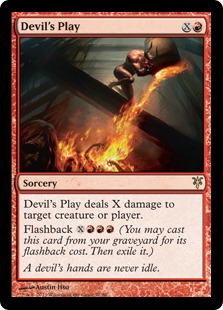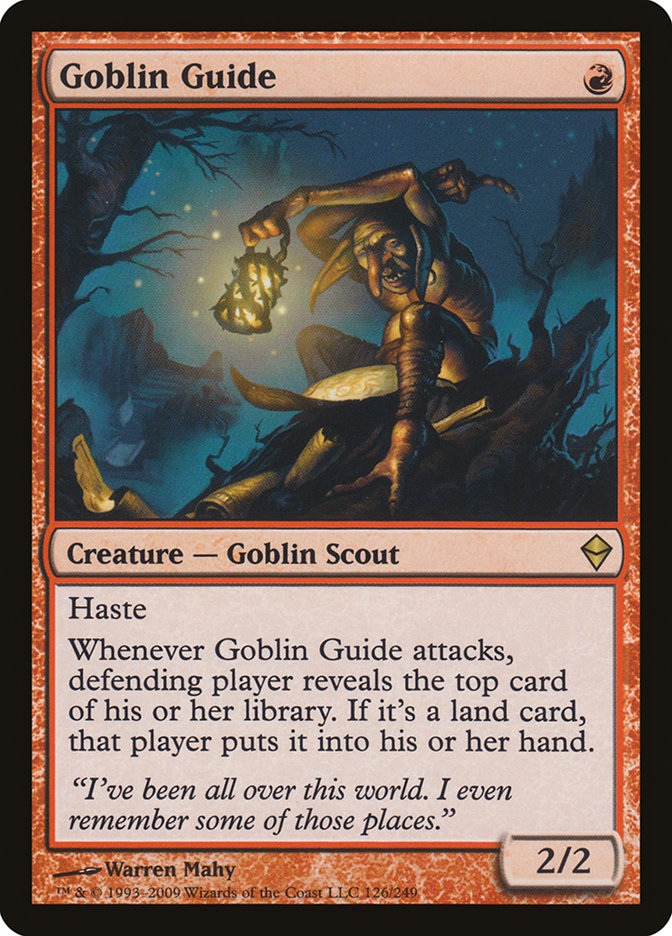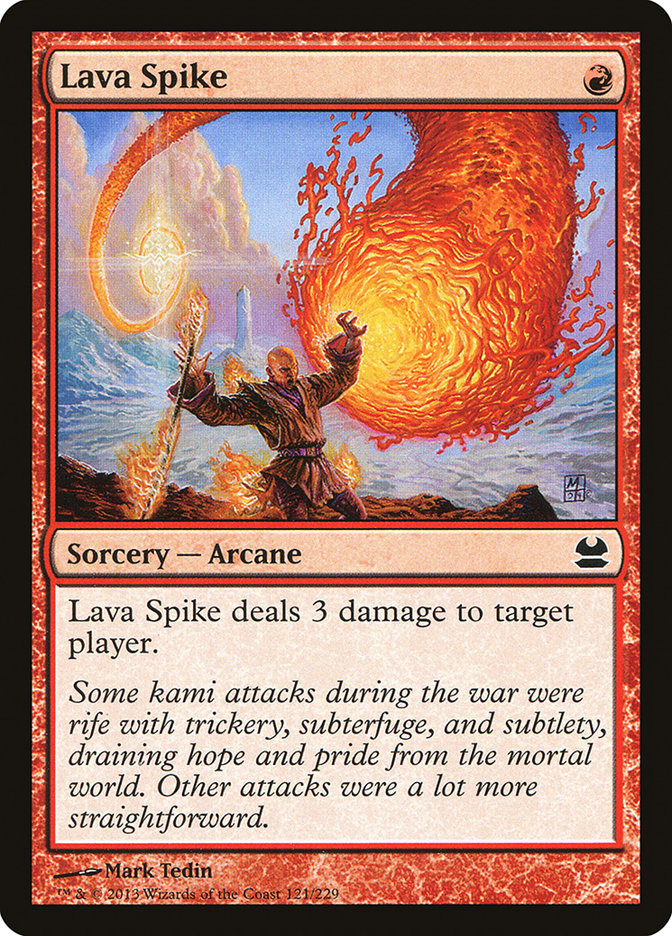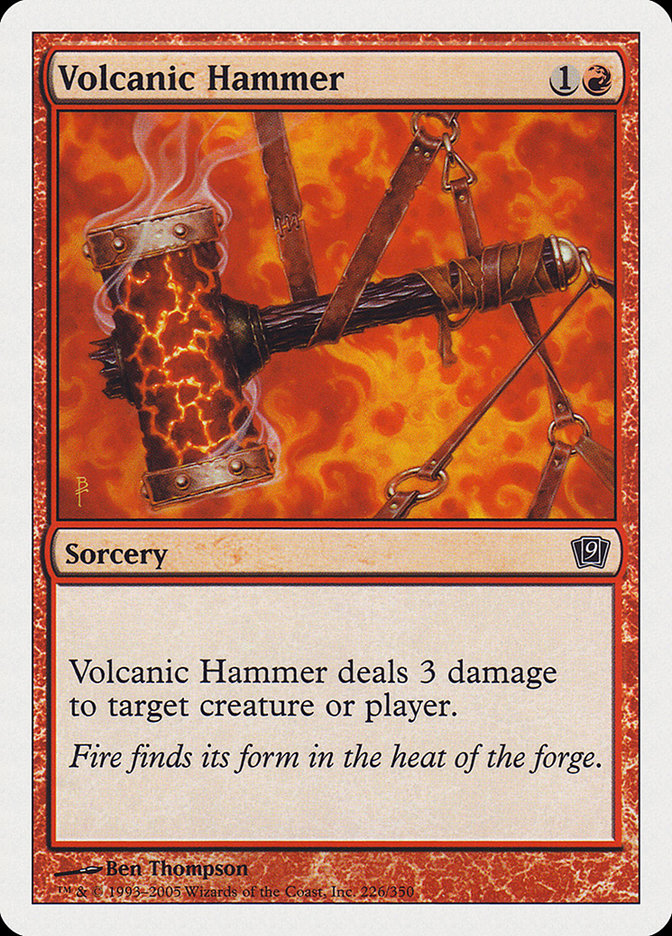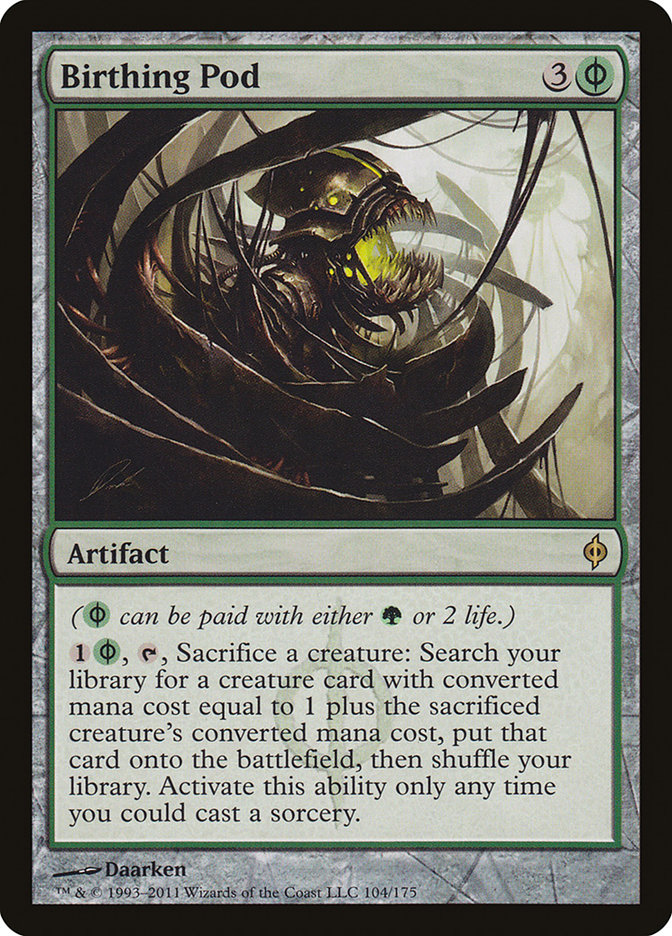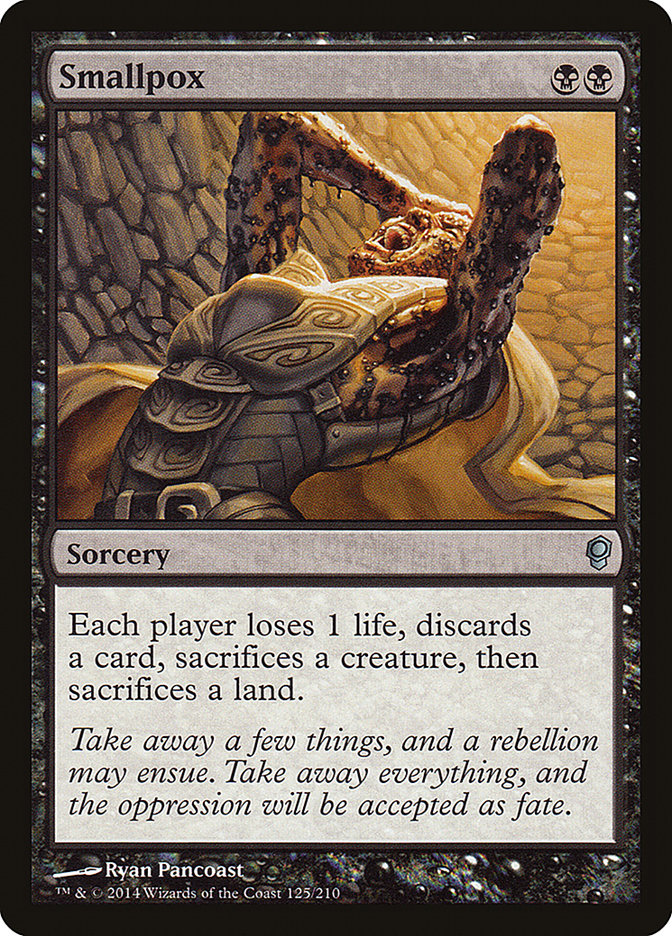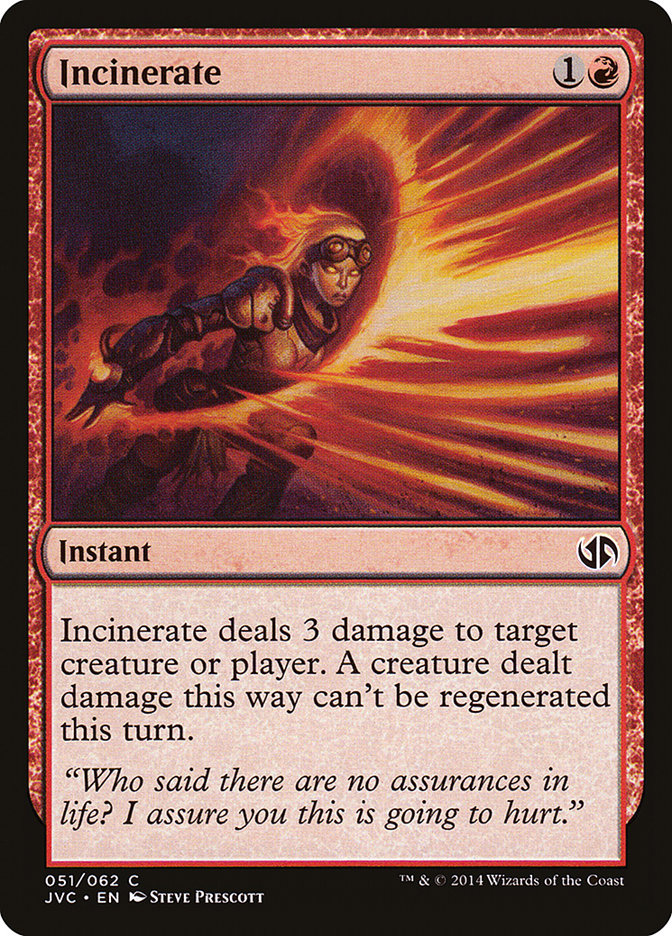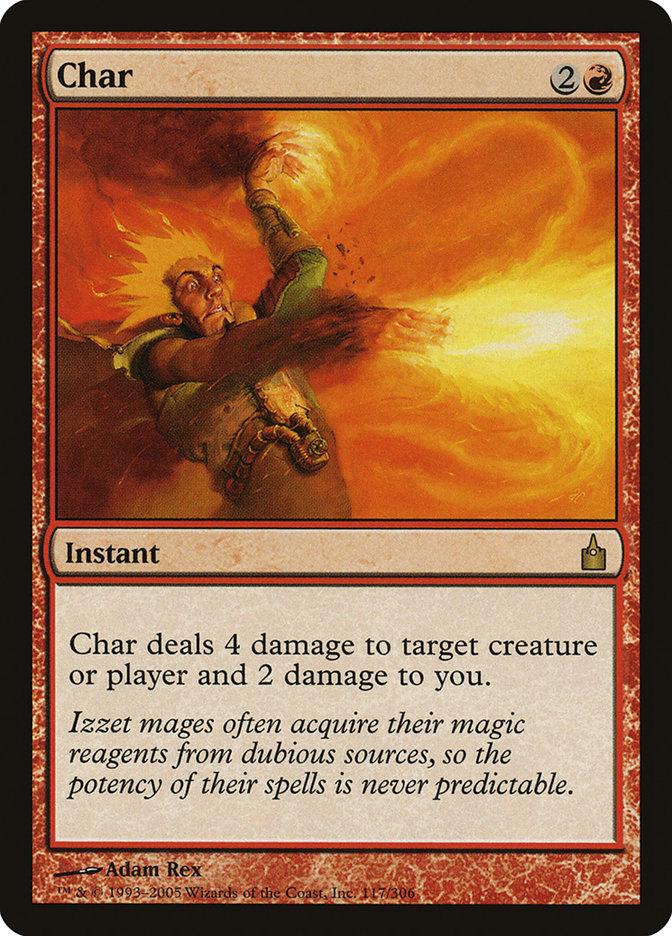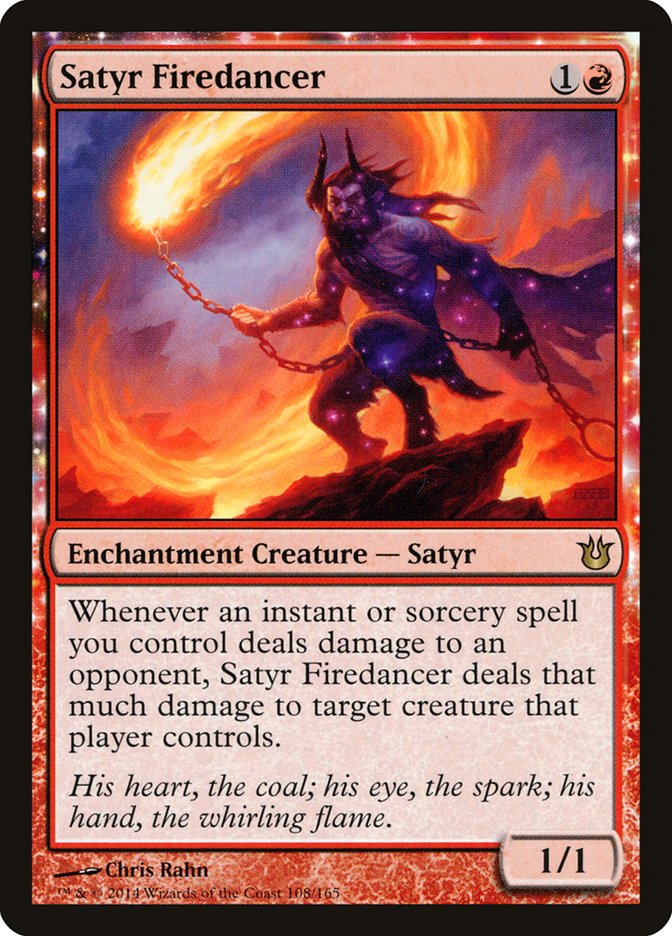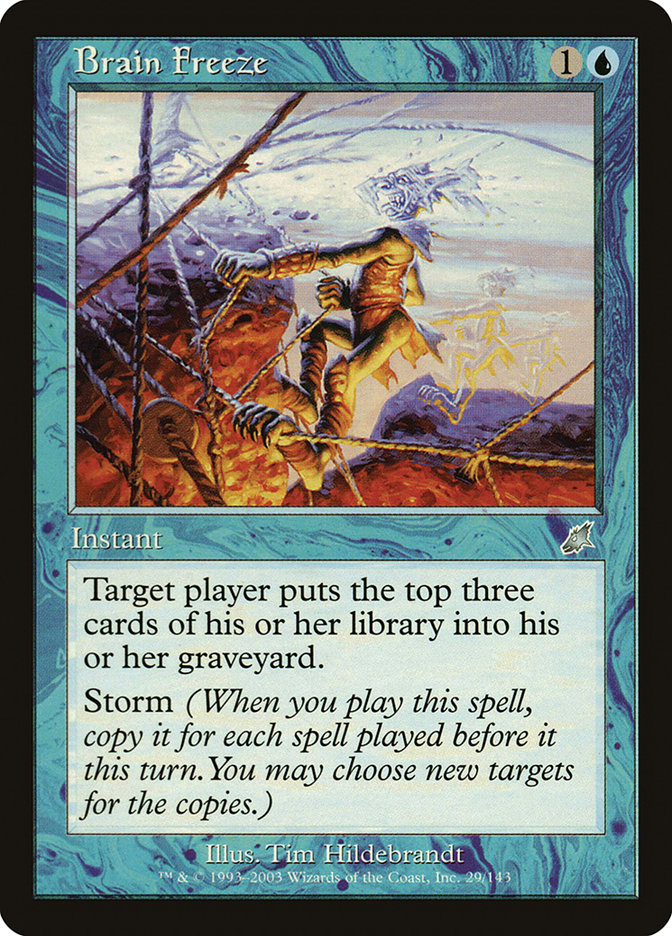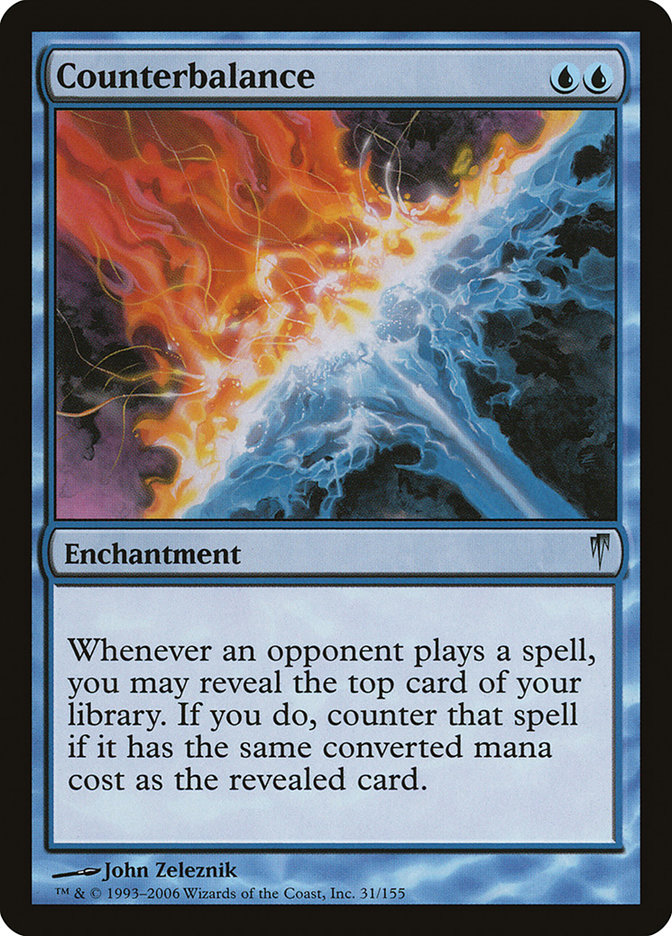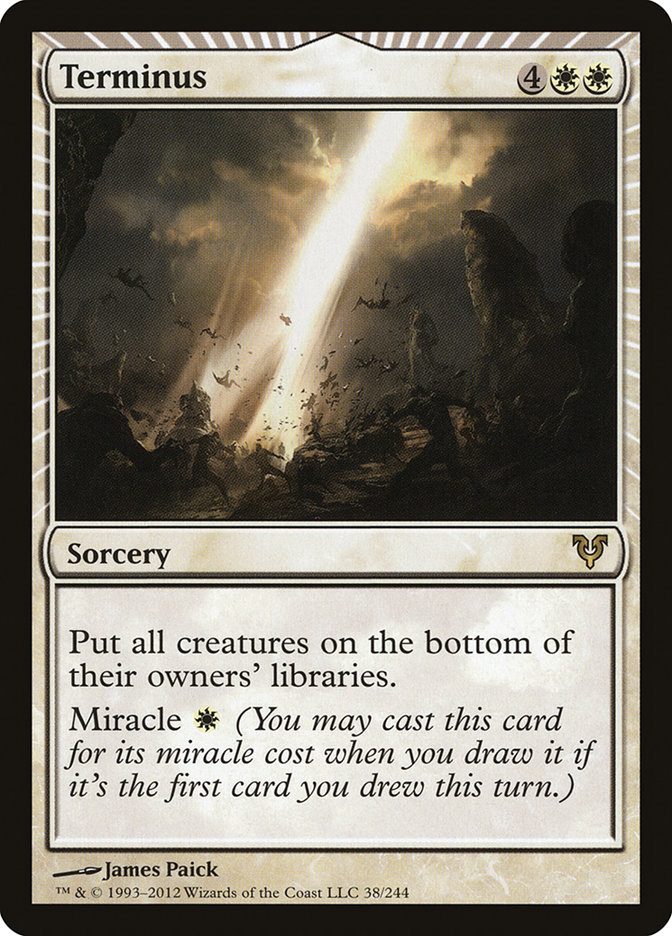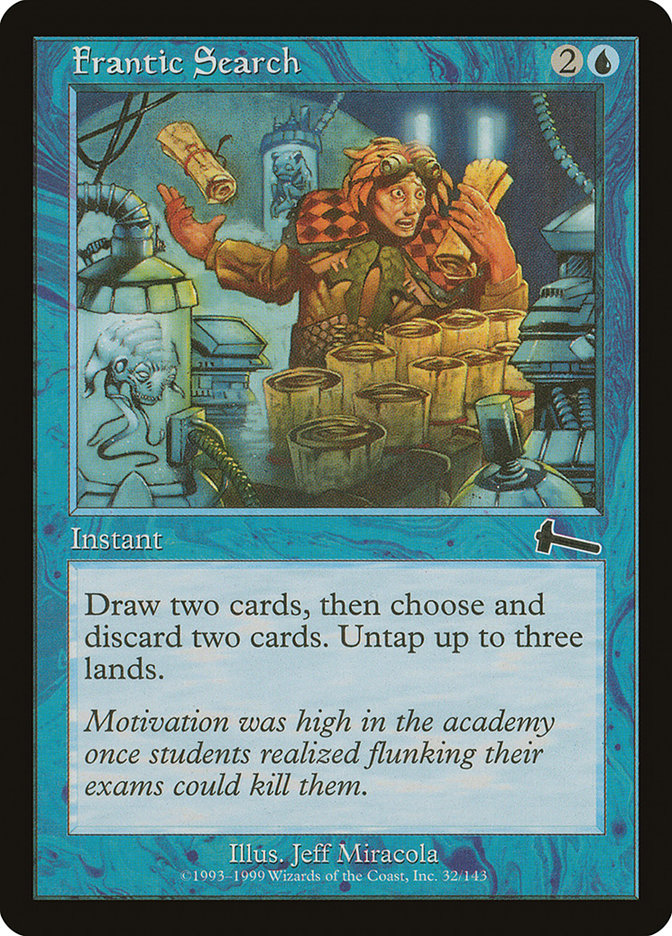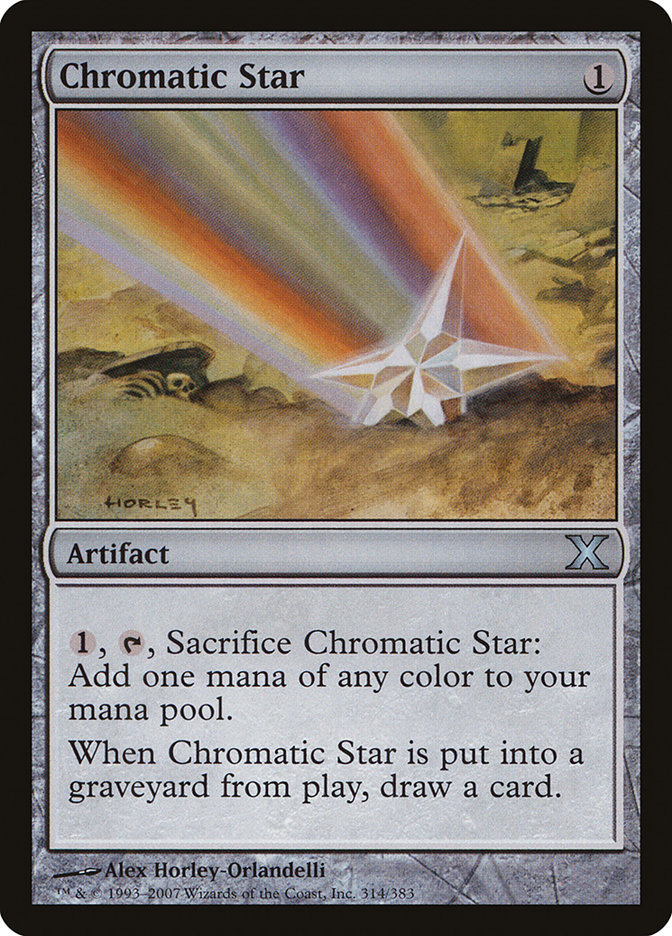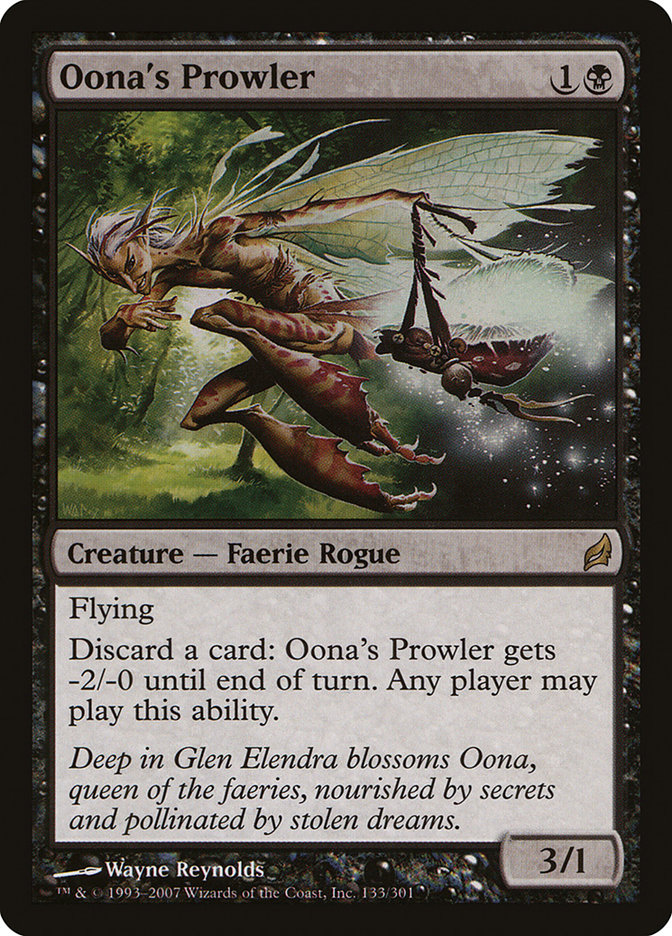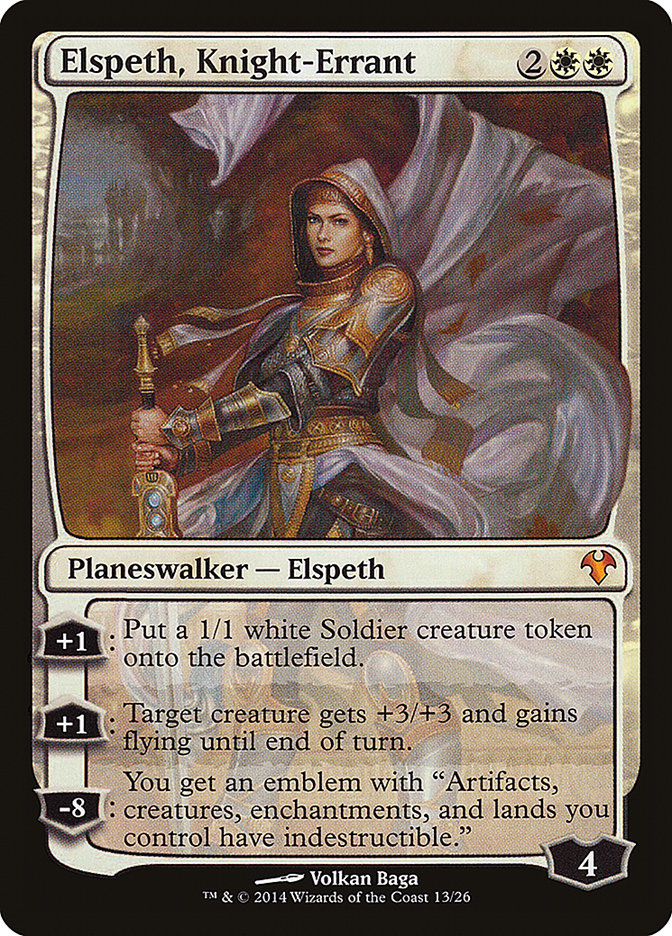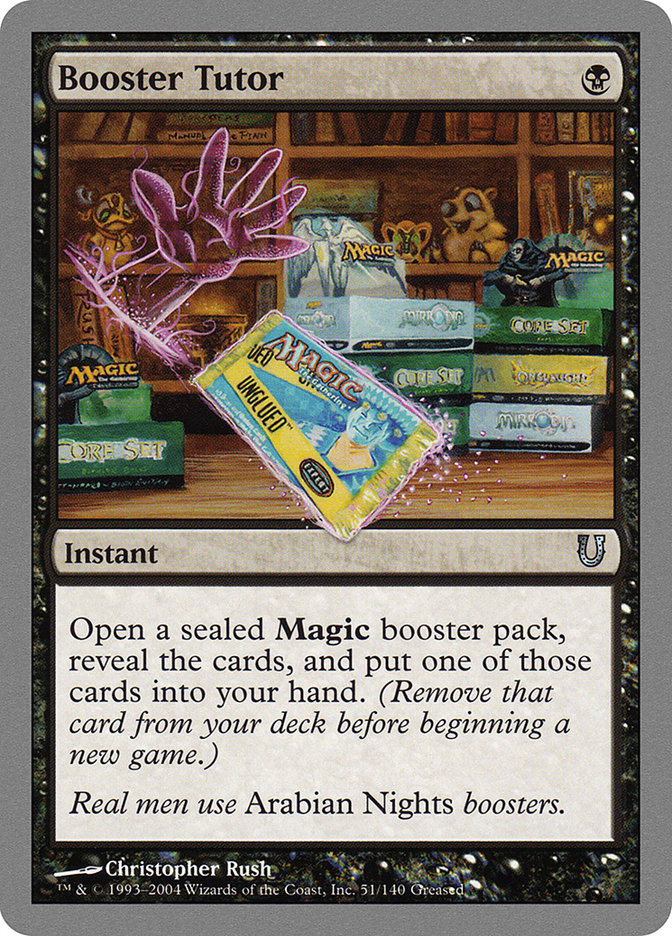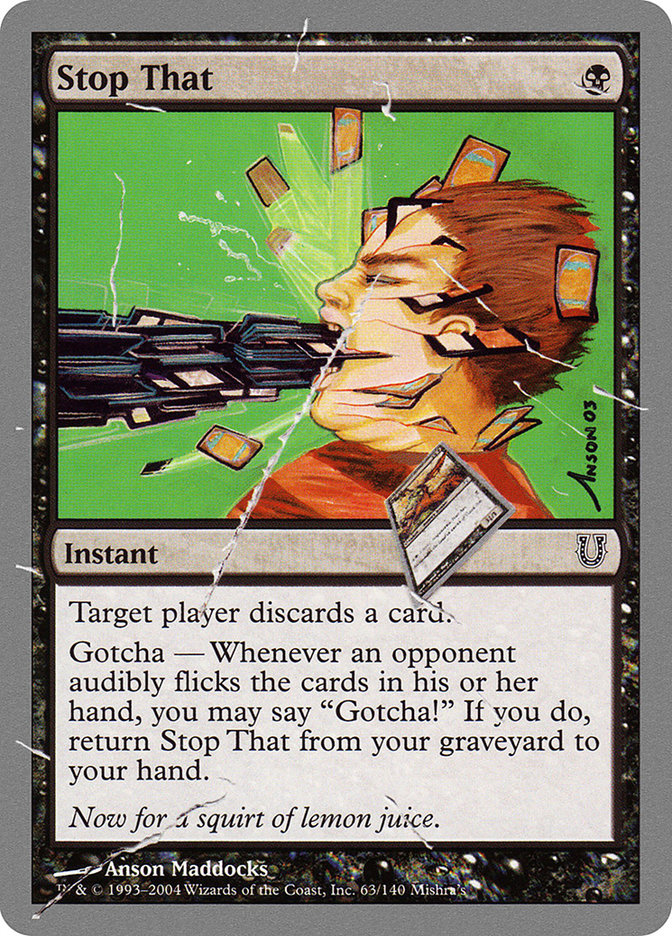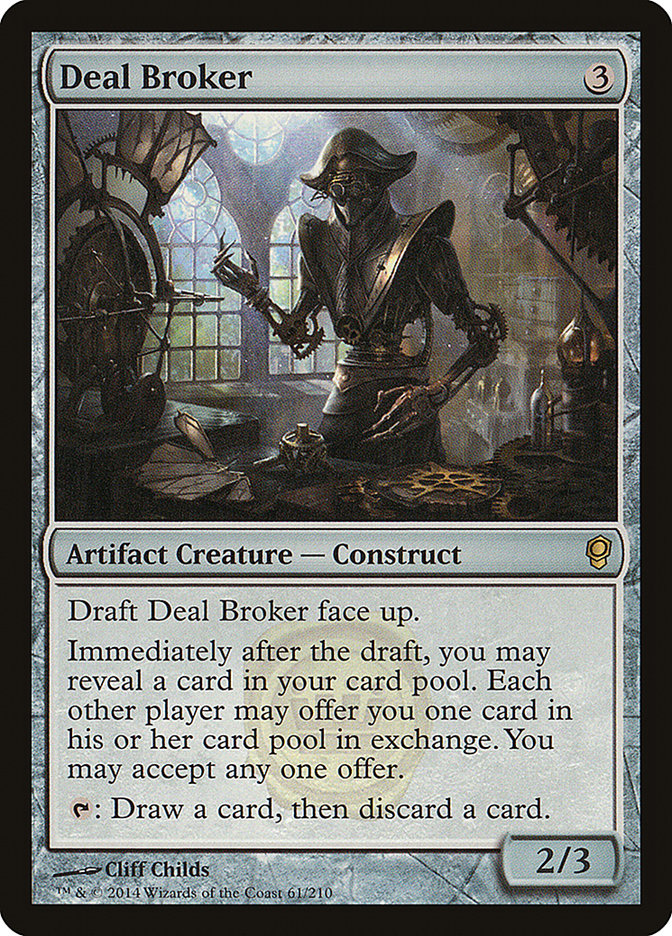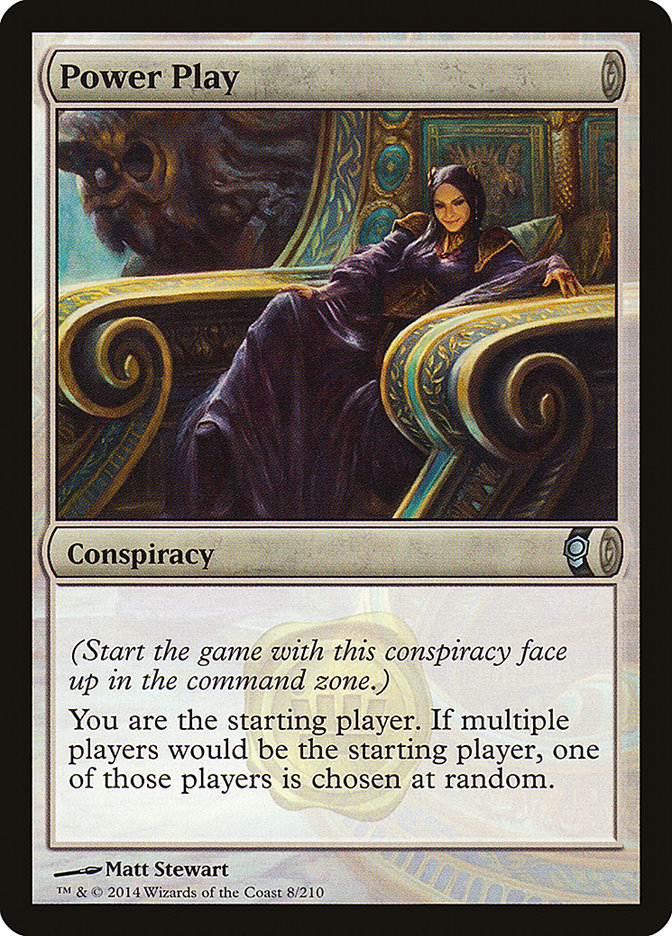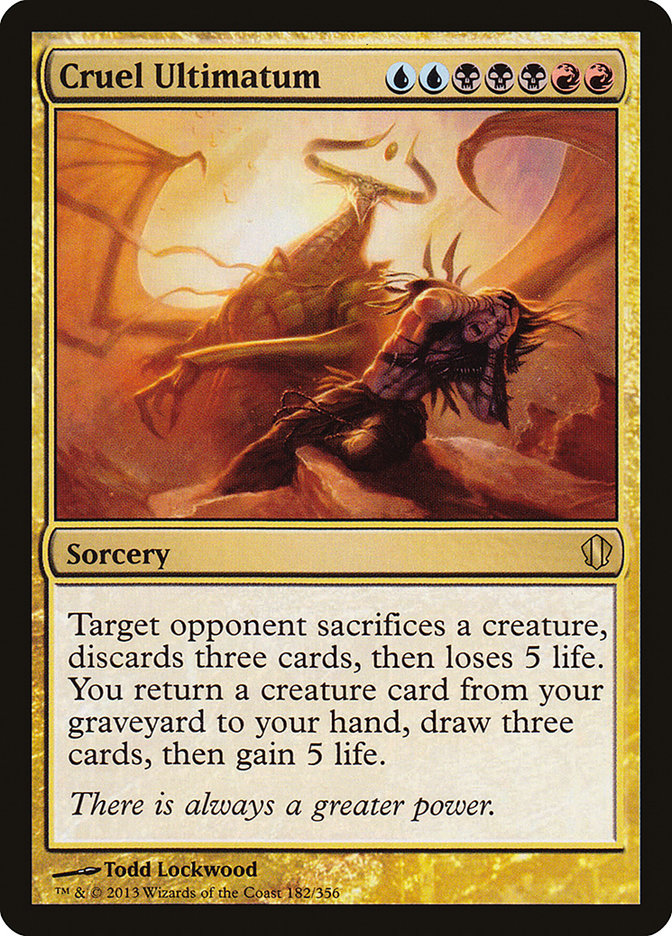Author’s note: This is the second in what are going to be a series of articles about both Cube in general and my own personal
Cube. The first article can be seen here, and covered the
basics of Cube design. This week
‘
s article will delve deeper into my own Cube while setting up for full explanations of all the cards it contains in subsequent articles.
Last week we looked at all the things that one needs to take into account when constructing a Cube. We looked over all the questions we need to ask and why
they are important from a design standpoint.
Today, I give you my answers.
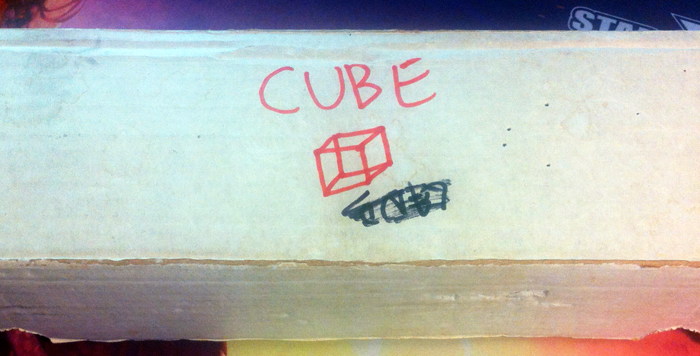
While there are many themes one can explore when building a Cube, the goal of my Cube is to be the ultimate ‘baseline’ Cube. That is, its only real theme
is to be best and most enjoyable Cube it can be.
Cube goals are to be:
– Extremely powerful but not broken.
– Thematically balanced but encouraging of creativity.
– Refined enough to promote synergy but not too redundant.
– Fun without being hokey.
So let’s look at how I accomplish each of these goals.
Power Level:
“Extremely powerful but not broken.”
If I had to use one Constructed format as an analogy to my Cube, it would be Legacy.
My Cube is capable of producing some very powerful unfair decks, not unlike the unfair decks in Legacy. These decks are definitely difficult to draft, but
with risk comes reward. Turn 2-3 kills are certainly possible, but they are definitely the deviation, not the norm.
Not only does my Cube contain some of the most powerful cards in Legacy, but it also has ones that are banned in Legacy. While a card like Oath of Druids
would be obscenely overpowered in Legacy when you are able to construct your entire deck in order to make it as broken as possible, doing so in the Cube is
much more difficult.
The goal is to provide drafters with very powerful cards that are also very interesting to build with. Drafting a deck where Oath of Druids or Timetwister
is going to be at its most powerful is going to be difficult but very rewarding. These sorts of ‘low-floor/high-ceiling’ cards are part of the backbone of
my Cube. Adding combo to the spectrum of decks between aggro, midrange, and control adds to the variety and enjoyment of the overall Cube experience.
“So Jim, I see you have Timetwister in your Cube. Does this mean you have the rest of the Power Nine?”
Absolutely not.
While I am very interested in pushing the boundaries of power level in the Cube, this does not mean I want the Cube to be broken. There are a few types of
cards that are completely unbalanced and drastically take away from the enjoyment of a Cube draft:
Broken Fast Mana
Yes, it is fun to cast Hero of Bladehold on turn 1 off of a Black Lotus the first time. However, absurd fast mana like Lotus, the Moxes, and other broken
mistakes like Sol Ring and Mana Crypt, tend to make games extremely one-sided and non-interactive; it gets old rather quick. The player who didn’t open a
Mox or Sol Ring feels bad because they didn’t even feel like they were in the game, and it ends up feeling more like a ‘Power Lottery’ than a draft.
This, of course, reveals the most erroneous problem with having these absurd mana producers in your Cube:
It’s almost never correct to pass one.
That sucks, as it removes one of the most interesting choices you will have in your draft… “what do I want to first pick!?” Many times in a powered Cube,
you will open that one card you really want, and sitting right next to it is a Sol Ring you can’t realistically pass if your plan is to actually win the
draft.
Powered Cubes are amusing, but I feel they’re ‘incorrect’ in the grand scheme of Cubing.
Actual Broken Cards
Aside from fast artifact mana, there are a handful of cards that require almost no work at all to be completely broken. Clearly Time Walk and Ancestral
Recall are among the most powerful cards ever printed, but this also catches other cards as well.
Cards like Mana Drain, Mind Twist, and Library of Alexandria are all absurdly powerful, but they also require almost no real effort to use effectively.
While one could easily make the argument that Oath of Druids is a more powerful card than Mind Twist, the issue here is the effort involved.
Cards like Oath of Druids and Tinker require skillful drafting and deck construction to use properly. Cards like Mana Drain and Library of Alexandria are
essentially just freerolls, and the effect they have on games is absurd. Getting buried by a player who draws an extra card off of Library of Alexandria
every single turn one ceases to be interesting or fun very quickly.
Format-‘Broken’ Cards
While the last two sections seem pretty obvious, this last one is where I think a lot of Cube designers get it wrong. Of course, it is ridiculous to think
any of these cards are in the same class as Mana Drain or Mox Pearl, but this is not just about abstract power level, it’s also about format-based power
level.
Protection effects are something that have been slowly faded out of modern Magic design for the last few years, and with good reason. It’s really annoying!
While yes, having good sideboard cards (Kor Firewalker) or helping to answer a need in a current Standard format (Stormbreath Dragon) is a very reasonable
thing, in such a varied format like Cube it can be extremely frustrating.
Very often Cube matches are played without sideboards anyway, but the most blatant offenders are the cards that are fine on their own but also have
protection thrown into the mix. Mirran Crusader is going to be pretty mediocre against your R/W opponent, but it’s going to be extremely frustrating for
your G/B opponent. The same goes for all the weak Sword of X and Y’s.
The goal of a good Cube environment is to be as powerful and interactive as possible, and cards with protection effects are either underpowered against
their off colors or extremely non-interactive.
Sword of Body and Mind is a double offender, because effects like it and Jace, Memory Adept poorly account for the 40-card deck size of Limited. While
neither of these cards is absurdly overpowered, they simply create uninteresting and non-interactive gamestates – which is something I am looking to avoid.
The biggest takeaway from what we want as far as power level goes is that we want the highest level of interaction possible, be it from the actual
draft/deckbuilding process or actual gameplay. I’m okay with extremely powerful cards as long as they are interesting and make for interesting gamestates.
Balance
Thematically balanced but encouraging creativity.
Of course, not every deck is going to want to use many of these very powerful Legacy+ staples. So how do we balance out their power level for those who are
trying to cast Primeval Titan or Dark Confidant?
The same way Legacy does, with powerful disruption and low mana curves.
Disruption

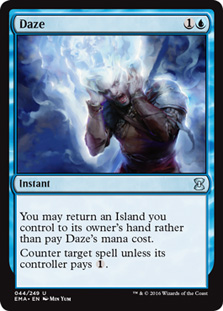

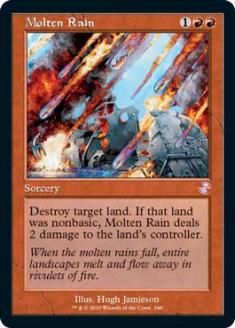
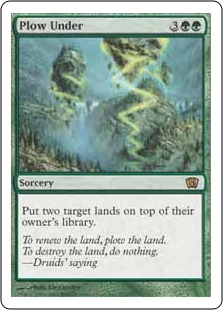

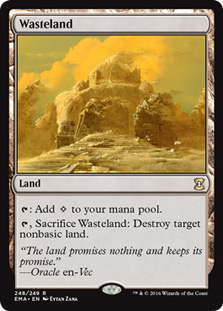
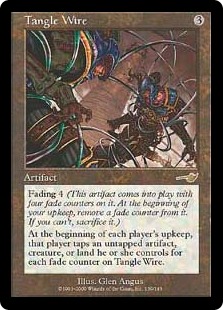
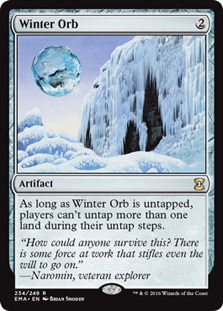
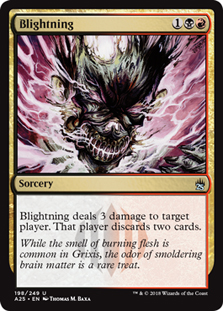
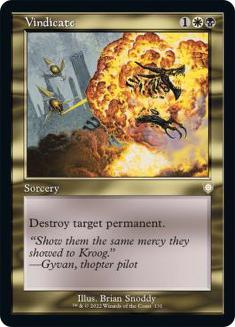

Just like you can’t really afford to just durdle around all day in Legacy, nor can you afford to do so in my Cube. The impetuous is on you for your deck to
actually do something and have some sort of a plan. That something may be to slow the game to a crawl with counterspells or end it really fast by
attacking with Vampire Lacerator, but you’ve gotta be doing something.
As such, there are plenty of disruptive elements in all of the colors to make sure the games are as interactive as possible. While powerful combo decks are
available if you can build them correctly, pretty much every deck has a chance to mount a reasonable disruptive fight with the tools that are available.
Conversely, if you choose to go down the combo path, you are going to have to fight through Tangle Wires and Strip Mines.
Low Mana Curves
One of the most important factors about my Cube that I see least often in other Cubes is how low my average converted mana cost is. There are a ton of one-
and two-mana spells in all colors, and as you go up the mana curve, those numbers drop considerably.
This is perhaps the most difficult aspect of Cube design, as it requires a ton of self-control. Yes, there are about twenty awesome four-mana cards in red,
but you really can only support so many! If you glut up a certain part of the curve with too many cards, people’s decks end up becoming extremely
unbalanced. You can only play so many four-drops in your deck, and people end up with wasted picks that could have been much better used if they had more
options available to them.
This is especially apparent at the higher mana costs. There are only a small handful of cards in each color that cost five or more mana, as they truly need
to be the best of the best. This means that tier-2 finishers like Frost Titan and mediocre X-spells just aren’t good enough. If you can’t play 3-4 Ugin,
the Spirit Dragon in your Standard deck, you can’t really hope to play 3-4 castable six-drops in your Cube deck.
Of course, it is very important to make sure there is balance between all the themes in your Cube, but it is also important to make sure our themes are
balanced in and of themselves as well.
Themes
“Refined enough to promote synergy but not too redundant.”
It is very important to make sure each color has a solid identity, but it is also extremely important to flesh out these identities and allow each color to
do different things.
This problem most often arises in red, and it is pretty much the sole reason why Mono-Red Aggro is often the best deck in most peoples’ Cubes.
Each other color has a few things they like to do. White is a good aggressive color but also a good control color. Blue is definitely more controlling, but
it has plenty of combo leanings and can control the game a few different ways, be it tempo or pure control. Black is usually disruptive, can be aggressive
or controlling, and also has excellent combo elements. Green can be aggressive, but it can also ramp to large threats or be a good supplemental color.
Every color also has a lot of cards that push decks into certain directions. If I want to be a black graveyard-based Reanimator deck, I am going to likely
want different cards than the black aggro player is going to want. There is a good amount of variety in each of the colors and a good amount of push/pull.
This is often not true of peoples’ red sections. Typically they are just packed to the brim with a boatload of burn spells and aggressive creatures, with
maybe a Sneak Attack thrown in to make it look like the color wants to do something else. While my aggressive white deck does not want Wrath of
God and my blue control deck doesn’t want Opposition, all of the red cards pretty much go together, making the deck foolproof.
I’ll say this again because it is so important:
If most of your red section is just aggressive creatures and burn spells, all a red drafter has to do is basically take any red card from each pack and
they will end up with a reasonable aggressive deck. This is a problem!
There’s a reason why Mono-Red was by far the most common deck to 3-0 Cube drafts on Magic Online… the Magic Online Cube is Constructed very poorly!
Imagine if you just took every green card that came your way randomly:
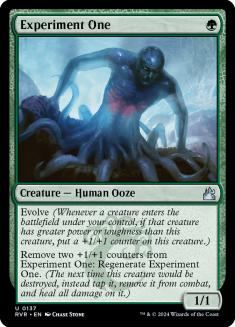
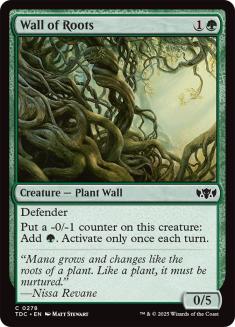
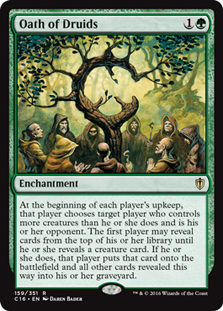

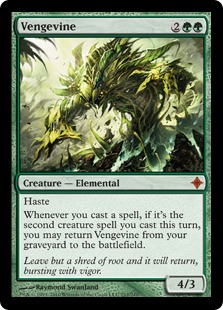
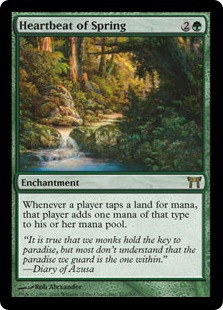

Looks like a mess!
While this problem is visible in red, it is important to address in all colors.
You want to give your drafters a bevy of options for fun things to draft.
Archetypes
The best way to do this is by supporting multiple archetypes across all of the colors. This is why Modern Masters and Vintage Masters were so much fun to
draft, as you wanted to be a certain ‘deck’ very often, and you needed to draft parts that were more than the sum of their whole.
Adding a storm theme is not as easy as just adding three storm cards and calling it a day. You need to add cards that support the theme, but you need to
also make sure they are flexible enough to be useful elsewhere.
While cards like Counterbalance and Terminus would be amazing with Sensei’s Divining Top, they are simply far too narrow and useless otherwise to be of
much use.
Rather, you want to find cards that support the decks you want to support but also have other uses as well. It’s okay to have a few very narrow cards if
the payoff is worth it, but the real goal is flexibility. Some examples:
All three of these cards are fine on their own, but they can also do an excellent job of serving a very specific role. Frantic Search can be a discard
outlet for your Reanimator deck or a land-untapper for your storm deck. Chromatic Star can add to your storm count, help out with artifact-themed cards, or
just fix your mana like it’s supposed to. Oona’s Prowler is a fine evasive beater that also doubles as a discard outlet for decks that want to get stuff in
their graveyard.
My Cube is rife with cards like this, and finding really good ones is honestly the bread and butter of a good Cube designer.
Redundancy
While you do need to support certain archetypes and decks, it is important not to fall too hard into redundancy. I typically have a rule that I will only
run one of each ‘card’ in my Cube, even if there are other options that do very similar things. There are always exceptions (usually at the lower mana
costs), but for the most part, I try to keep it to one of each effect. That means no Ravages of War, no Miscalculation, no Avalanche Riders, etc, as
Armageddon, Mana Leak, and Ravenous Baboons do their jobs as well or better.
This has the double effect of both making the Cube smaller, and therefore more focused, and making each card more special. If you really want that
Wildfire, you damn well better pick it up because there are no more.
Planeswalker overpopulation is another major problem in most Cubes.
Planeswalkers, even the underpowered ones, are very powerful in Cube drafts. Naturally, in a Limited environment players’ decks aren’t always going to be
exactly what they want, and cards that are as abstractly powerful as planeswalkers are going to stand out a lot. The problem is that so many reasonable
planeswalkers have been printed over the years that there are simply far too many to include.
Just like how you don’t want your entire red section to be one-mana creatures and burn spells, you don’t want to have a ton of planeswalkers packed into
the four and five mana slots in your Cube.
Planeswalkers tend to promote a more midrange style of game, and having a bunch of them starts to make your entire Cube revolve around them and the
midrange style of gameplay. Games end up devolving into my three planeswalkers and support spells against your three planeswalkers and support spells.
Again, they cease to be special in any way and promote a deck style that doesn’t really need any help.
While aggressive decks need specific early drops, and control decks need specific finishers, midrange decks are just made of good spells that fall anywhere
in between the two. They need very little support since they sort of just make themselves.
There can be only one.
This is why I only allow one planeswalker for each color in my cube, with a few others scattered among the multicolor and colorless sections. This is not
necessarily a hard and fast rule, as I have considering breaking it before, but the goal is clear. I also make sure that whatever planeswalker I choose is
very flexible and powerful, and good in and against multiple decks.
Not only am I adhering to my “only the best” philosophy, but it ensures that planeswalkers are both special and not format-warping. Besides, nobody wants
to lose to Elspeth Tirel or some other garbage anyway.
Fun Factor
“Fun without being hokey.”
Most importantly, Cube is supposed to be fun. Of course, fun is an extremely subjective term. While some people find eight-player four-hour Commander games
fun, that sounds like actual hell on Earth to me.
Regardless, deciding how much ‘fun’ to include in the Cube is important without being hokey. Define Hokey?
Cheatyface was commonplace in many of my friends’ Cubes, but I found the joke got old pretty quick after the first few times. It existing forces you to pay
attention to things you wouldn’t normally have to every single match in case your opponent has it. Booster Tutor was always amusing but rather time
consuming and inelegant, and other options from sets like Unglued just feel silly to me.
I have, however, employed some of the Conspiracy cards specially tailored for drafting, as well as a few actual conspiracy cards as well. I was
concerned at first that they would simply be inelegant, but they have been worth the trouble. There are also about five cards in the Cube that are pretty
awkward or narrow but extremely amusing when they come together, and I think that’s a good-sized number. Think Cruel Ultimatum or Obliterate.
Elegance
One concept that is very difficult to conceptualize when it comes to fun factor is elegance, which is basically just how smooth the whole experience feels.
This was the problem with cards like Booster Tutor and what I worried would be the problem with conspiracies. When people feel like they have to put a lot
of extra work into the game it makes it feel less smooth, and therefore, less fun.
Elegance has nixed a few ideas I’ve had, like putting in a card like Squadron Hawk and making it so you get three copies of the card when you draft it, or
errataing certain creature types. You don’t want to make your audience work too hard.
This is a big reason why there are almost no tribal effects in the Cube. There’s simply too much creature type errata for the cards to actually do what
they say they do. While I do have a very light Human subtheme, it is pretty self-explanatory–you can usually tell–and I feel that it’s worth it.
The Unveiling
Man, a lot sure goes into this thing!
Next week, we break out the Cube itself, as I will be going through each color and card choice. While everything we talked about today is the philosophy of
the design of my Cube, next week we will start to tackle the actual beast.

